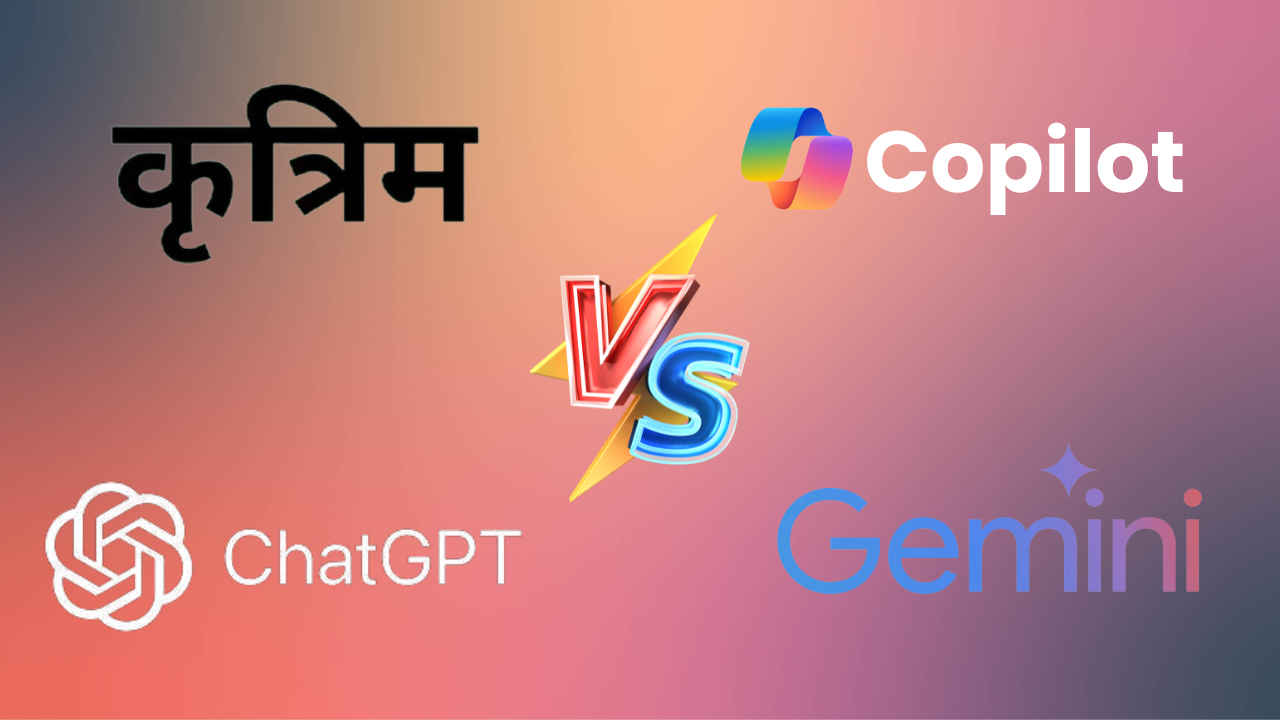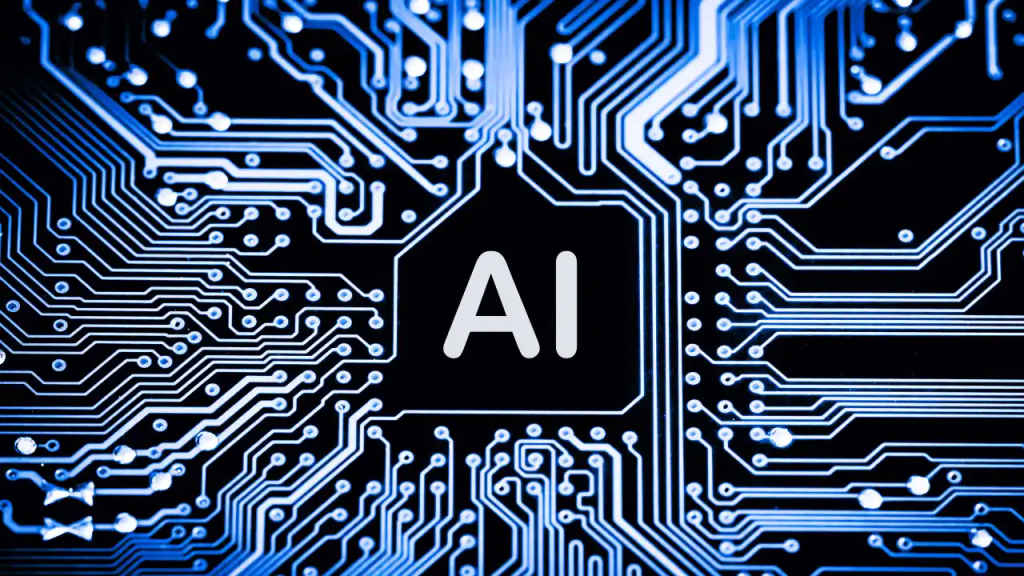Comparison: India’s Krutrim AI assistant vs ChatGPT, Google Gemini and Copilot
As our reliance on smartphones grows, so does our reliance on AI chatbots.
Amidst the global giants in AI, there’s a rising star from India that might have slipped under your radar: Ola’s Krutrim AI assistant.
I asked Krutrim, ChatGPT, Google Gemini and Microsoft Copilot to explain the concept of NPU in processors.

In our rapidly evolving technological landscape, the demand for fast, readily available information is more crucial than ever. As our reliance on smartphones grows, so does our reliance on AI chatbots. Amidst the global giants in AI, there’s a rising star from India that might have slipped under your radar: Ola’s Krutrim AI assistant.
 Survey
SurveyIn this article, I have compared India’s Krutrim AI with popular chatbots like ChatGPT, Google Gemini, and Microsoft Copilot.
Also read: I asked AI to help me with advice on toothache, here’s what I got

I asked Krutrim, ChatGPT, Google Gemini and Microsoft Copilot to: Explain concept of NPU in processors. Let’s see how they responded.
Krutrim
A Neural Processing Unit (NPU) is a specialised hardware accelerator designed to optimise the performance of artificial intelligence (AI) and machine learning tasks. Unlike traditional Central Processing Units (CPUs) and Graphics Processing Units (GPUs), NPUs are specifically designed to handle the complex mathematical computations required by deep learning algorithms. They are highly efficient at processing AI tasks such as natural language processing, image analysis, and more. NPUs are embedded within chipset processors to enhance the performance of neural network applications, freeing up the CPU and providing power efficiency. The integration of NPUs into larger SoCs enables the acceleration of AI tasks and the efficient execution of artificial neural network operations.
Also read: Meta AI vs Microsoft Copilot: Who generates better AI images? Check results

ChatGPT
An NPU, or Neural Processing Unit, is a specialised processing unit designed to efficiently perform tasks related to artificial intelligence (AI) and machine learning (ML). Traditional processors, like CPUs (Central Processing Units) and GPUs (Graphics Processing Units), are general-purpose and can handle a wide range of tasks, but they might not be optimised for the specific demands of AI and ML computations.
NPUs are tailored to accelerate the types of calculations involved in neural network operations, such as matrix multiplications and convolutions, which are fundamental to deep learning algorithms. These units are typically optimised for high parallelism and low precision arithmetic, which are common characteristics of neural network computations.
NPUs can significantly speed up AI and ML workloads compared to running them on general-purpose processors. They are commonly found in various devices such as smartphones, smart cameras, autonomous vehicles, and data centres, where AI and ML tasks are increasingly important. By offloading these tasks to dedicated NPUs, overall system performance can be improved while also reducing power consumption, making them especially valuable for edge computing and mobile applications where energy efficiency is crucial.
Microsoft Copilot
An NPU (Neural Processing Unit) is a specialised processor designed explicitly for executing machine learning algorithms. Unlike traditional CPUs and GPUs, NPUs are optimised for handling complex mathematical computations integral to artificial neural networks. Here are some key points about NPUs:
- Dedicated Acceleration: An NPU is specifically designed to accelerate neural network operations and AI tasks. It focuses on data-driven parallel computing, making it highly efficient at processing massive multimedia data like videos and images, as well as handling AI-related tasks such as speech recognition, background blurring in video calls, and photo or video editing processes like object detection.
- Integration: For most consumer products, the NPU is integrated into the main CPU, as seen in Intel Core and Core Ultra series or the new AMD Ryzen 8040-series laptop processors. However, in larger data centres or specialised industrial operations, the NPU might be a separate discrete processor on the motherboard, independent of other processing units.
- Difference from GPUs: While many AI and machine learning workloads are run on GPUs, there’s an important distinction between GPUs and NPUs. GPUs are known for their parallel computing capabilities, but not all GPUs are equally effective at processing machine learning workloads. NPUs, on the other hand, are purpose-built for neural network computations, making them more efficient for AI tasks.
In summary, NPUs play a crucial role in accelerating AI workloads, enhancing performance, and enabling a new era of AI-accelerated tasks across various domains. If you have any more questions or need further clarification, feel free to ask!
Gemini
CPUs are the workhorses of computers, handling a wide range of tasks. GPUs excel at rendering graphics and complex calculations. But for tasks specifically involving artificial intelligence (AI), there’s a new player on the team: the NPU, or Neural Processing Unit.
Here’s the breakdown:
- Focus on AI: Unlike CPUs and GPUs, NPUs are built specifically for accelerating AI applications. They’re designed to mimic the structure and function of the human neural network, making them super efficient at tasks like image recognition, speech recognition, and machine learning.
- Power of Parallel Processing: NPUs are essentially manycore processors, meaning they can crunch through massive amounts of data simultaneously. This parallel processing muscle is ideal for the complex calculations involved in AI algorithms.
- Efficiency Matters: NPUs are optimised for low-power operation. This is crucial for battery-powered devices like smartphones where extended AI use shouldn’t drain the battery quickly.
- Working Together: CPUs, GPUs, and NPUs don’t compete, they complement each other. The CPU handles general tasks, the GPU tackles graphics and heavy calculations, and the NPU speeds up AI workloads. This division of labour keeps everything running smoothly.
Overall, NPUs are a powerful addition to the processing team, accelerating AI tasks and making devices more efficient for an increasingly AI-powered world.
Verdict
In my opinion, Gemini provided the clearest and most straightforward explanation of NPUs (Neural Processing Units) among the compared AI chatbots. Gemini’s explanation was easy to understand, avoiding technical jargon.
Ayushi Jain
Tech news writer by day, BGMI player by night. Combining my passion for tech and gaming to bring you the latest in both worlds. View Full Profile